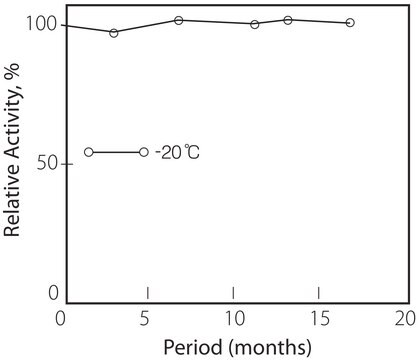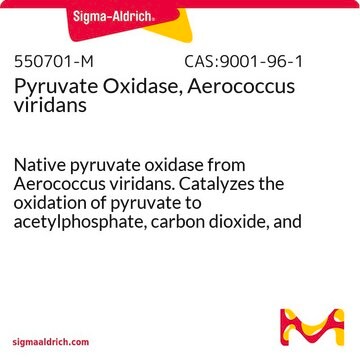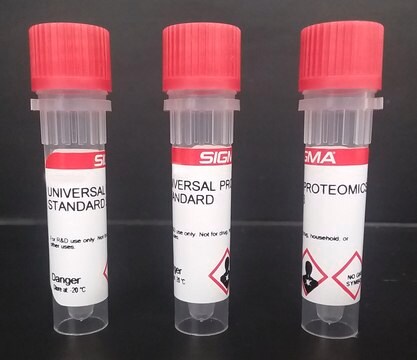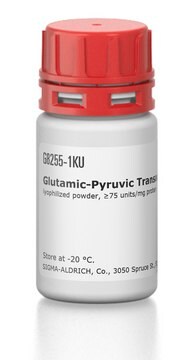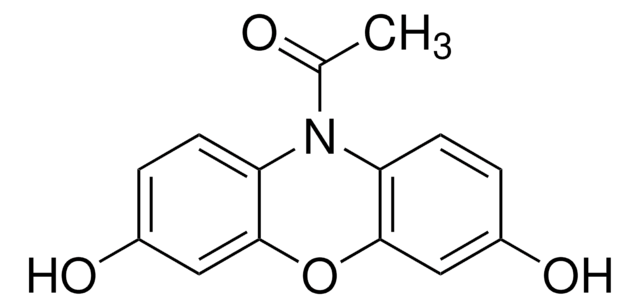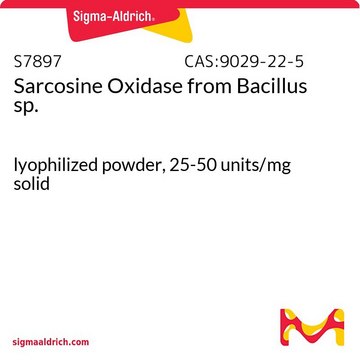P4105
Pyruvate Oxidase from Aerococcus sp.
lyophilized powder, ≥35 units/mg protein (biuret)
Synonym(e):
Pyruvate: oxygen oxidoreductase (phosphorylating)
About This Item
Empfohlene Produkte
Biologische Quelle
bacterial (Aerococcus spp.)
Qualitätsniveau
Form
lyophilized powder
Spezifische Aktivität
≥35 units/mg protein (biuret)
Lagertemp.
−20°C
Anwendung
Biochem./physiol. Wirkung
Einheitendefinition
Physikalische Form
Signalwort
Danger
H-Sätze
P-Sätze
Gefahreneinstufungen
Resp. Sens. 1
Lagerklassenschlüssel
11 - Combustible Solids
WGK
WGK 3
Flammpunkt (°F)
Not applicable
Flammpunkt (°C)
Not applicable
Persönliche Schutzausrüstung
Eyeshields, Gloves, type N95 (US)
Analysenzertifikate (COA)
Suchen Sie nach Analysenzertifikate (COA), indem Sie die Lot-/Chargennummer des Produkts eingeben. Lot- und Chargennummern sind auf dem Produktetikett hinter den Wörtern ‘Lot’ oder ‘Batch’ (Lot oder Charge) zu finden.
Besitzen Sie dieses Produkt bereits?
In der Dokumentenbibliothek finden Sie die Dokumentation zu den Produkten, die Sie kürzlich erworben haben.
Kunden haben sich ebenfalls angesehen
Unser Team von Wissenschaftlern verfügt über Erfahrung in allen Forschungsbereichen einschließlich Life Science, Materialwissenschaften, chemischer Synthese, Chromatographie, Analytik und vielen mehr..
Setzen Sie sich mit dem technischen Dienst in Verbindung.